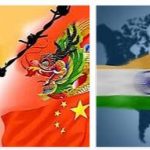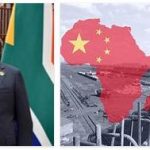Major Trading Partners of China
China, as the world’s second-largest economy, plays a pivotal role in global trade. Its extensive network of trading partners spans regions and continents, reflecting the country’s economic prowess and strategic importance. This comprehensive analysis explores China’s major trading partners, examining the dynamics, significance, and implications of its economic relationships with various nations.
1. United States: The United States has historically been one of China’s most significant trading partners. The economic ties between these two global giants are multifaceted, encompassing a vast array of goods and services. The bilateral trade relationship has faced challenges, including trade imbalances, intellectual property concerns, and tariff disputes. However, the sheer volume of trade between the U.S. and China highlights their interconnected economies.
Key sectors in this trade relationship include electronics, machinery, textiles, and agricultural products. The U.S. is a major market for Chinese exports, while China serves as a crucial source of manufactured goods for American consumers.
2. European Union: As a bloc, the European Union (EU) is collectively one of China’s largest trading partners. The EU’s member states engage in extensive trade with China, covering a diverse range of products and services. Germany, the United Kingdom, France, and the Netherlands are among the leading EU countries in terms of trade volume with China.
The trade relationship involves machinery, automobiles, chemicals, and consumer goods. While economic cooperation is robust, the EU and China have navigated challenges related to market access, fair trade practices, and concerns about intellectual property rights.
3. Japan: China’s economic relationship with Japan is complex, reflecting historical tensions, economic cooperation, and geopolitical considerations. Japan is a major importer of Chinese goods, particularly electronics, machinery, and consumer products. Conversely, China imports machinery, industrial equipment, and high-tech products from Japan.
Despite occasional diplomatic tensions, economic pragmatism has driven collaboration between these East Asian neighbors. Joint ventures, investments, and trade agreements contribute to the economic interdependence between China and Japan.
4. South Korea: South Korea is a key trading partner for China, with the economic relationship deeply rooted in geographical proximity and industrial complementarity. China imports a significant amount of goods from South Korea, including electronics, machinery, and petrochemical products. In return, South Korea imports raw materials, components, and consumer goods from China.
The intricate supply chain networks between the two countries highlight their economic interdependence. The Free Trade Agreement (FTA) between China and South Korea has further facilitated trade and economic cooperation.
5. ASEAN Countries: The Association of Southeast Asian Nations (ASEAN) collectively constitutes a vital trading partner for China. The economic relationship with ASEAN countries involves a wide range of products, including electronics, machinery, textiles, and agricultural goods. The region serves as a hub for China’s Belt and Road Initiative (BRI), promoting connectivity and infrastructure development.
China’s economic engagement with ASEAN reflects its efforts to enhance regional cooperation and tap into the dynamic markets of Southeast Asia. Trade agreements and collaborative initiatives contribute to the growth of economic ties.
6. Australia: Australia, rich in natural resources, is a significant trading partner for China. China imports minerals, agricultural products, and energy resources from Australia, contributing to its industrial and economic development. In return, China exports manufactured goods, machinery, and consumer products to Australia.
While economic ties are substantial, geopolitical tensions and diplomatic disputes have impacted the trade relationship. Issues such as trade restrictions, investment concerns, and divergent political stances have added complexity to the China-Australia trade dynamic.
7. Brazil and Latin America: China’s economic engagement with Latin American countries, particularly Brazil, has expanded significantly. China’s voracious appetite for commodities has led to extensive imports of agricultural products, minerals, and energy resources from countries in the region. In return, China exports machinery, electronics, and consumer goods.
The economic relationship with Latin America involves investments, infrastructure projects, and collaborations that contribute to the development of both Chinese and Latin American economies. However, concerns about resource dependency and environmental impacts have prompted discussions about the long-term implications of this economic engagement.
8. Russia: China and Russia share a strategic economic partnership, characterized by energy cooperation, trade, and investments. Russia is a major supplier of energy resources, particularly oil and natural gas, to China. In return, China exports machinery, electronics, and consumer goods to Russia.
The collaboration extends beyond trade to include joint ventures, infrastructure projects, and geopolitical cooperation. The energy deals between the two countries, such as the Power of Siberia gas pipeline, exemplify the depth of their economic ties.
9. India: China’s economic relationship with India is marked by both cooperation and competition. India imports a diverse array of products from China, including electronics, machinery, and consumer goods. However, trade imbalances, market access issues, and geopolitical tensions along the disputed border have strained the economic ties between the two nations.
Despite challenges, both China and India recognize the potential benefits of economic cooperation. Efforts to address trade imbalances and promote collaboration in areas such as technology and manufacturing are ongoing.
10. Africa: China’s economic footprint in Africa has grown substantially, characterized by trade, investments, and infrastructure projects. China imports raw materials, minerals, and agricultural products from African countries and exports machinery, consumer goods, and infrastructure development services.
The Forum on China-Africa Cooperation (FOCAC) serves as a platform for diplomatic and economic collaboration. While China’s engagement has contributed to economic development in some African nations, concerns about debt sustainability, resource extraction, and labor practices have prompted discussions about the long-term impact of these economic ties.
Geopolitical Considerations and Future Trends: China’s major trading partners are not only shaped by economic considerations but are also influenced by geopolitical factors. The Belt and Road Initiative (BRI), regional alliances, and geopolitical shifts play a crucial role in shaping China’s economic relationships. As China continues to assert itself on the global stage, the dynamics of its trade partnerships are likely to evolve.
Future trends may include a greater focus on technological cooperation, green initiatives, and efforts to address global challenges such as climate change. The push for economic resilience, innovation, and sustainable development is likely to impact China’s trade priorities and partnerships in the coming years.
According to ALLCOUNTRYLIST, the economic relationships with the United States, European Union, neighboring Asian countries, and regions such as Latin America and Africa contribute to China’s status as a global economic powerhouse.
While economic cooperation is evident, challenges such as trade imbalances, geopolitical tensions, and environmental concerns underscore the complexity of these relationships. The ongoing evolution of China’s trade dynamics, driven by domestic priorities and global shifts, will continue to shape the landscape of international trade in the years to come. As China balances economic interests with geopolitical considerations, the world watches closely to understand the implications of its evolving role in the global economy.










